 AutoCAD
AutoCAD AutoCAD LT
AutoCAD LT Fusion
Fusion AutoCAD Revit LT Suite
AutoCAD Revit LT Suite Architecture, Engineering & Construction Collection
Architecture, Engineering & Construction Collection Revit
Revit Civil 3D
Civil 3D BIM Collaborate Pro
BIM Collaborate Pro Product Design & Manufacturing Collection
Product Design & Manufacturing Collection Maya
Maya Inventor
Inventor Navisworks
Navisworks 3DS Max
3DS Max Fusion Extensions
Fusion ExtensionsTranscript
00:04
When you are working with info
00:05
works.
00:06
WS pro you will need to validate models to ensure
00:09
they are hydraulically sound before simulations can be run.
00:13
The validation process involves finding errors and warnings if
00:16
any exist and then fixing them one at a time
00:20
in the ribbon, click the file tab
00:23
open open transportable database,
00:26
then navigate to your desktop,
00:28
select the data folder
00:30
and locate the session three folder.
00:33
Click the file named validating models dot WPT and open it.
00:39
A window opens showing the contents of the transportable database
00:43
press and hold shift as you click both the session 03
00:46
and session 03 lock model groups to select both of them.
00:51
Then
00:52
right click and select copy
00:55
in the model group window, right click database and click paste all
00:59
close the transportable database window
01:04
in the model group window, expand the session 03 model group,
01:08
click and drag the bridge net network to open the GEO plan and
01:12
the bridge con control from the model group window into the workspace,
01:17
then expand the demand diagram group and click and drag
01:21
the bridgetown demand diagram to open it as well.
01:24
Alternatively,
01:26
if you have the control and demand diagram already associated with the network,
01:30
they will open with the network
01:33
to start the validation process.
01:35
You can either click the validate button in the toolbar
01:37
or click the network tab and select validate network.
01:42
The network validation dialogue opens
01:45
in this exercise,
01:46
you can see the network and its associated control in their respective group boxes.
01:52
If the control and demand diagram are not associated,
01:55
you will need to drag and drop them into their respective boxes,
01:60
electricity tariff,
02:01
alternative demand and solute data objects can be validated if necessary.
02:07
Click. Ok,
02:11
an output window appears and lists several errors and a warning,
02:16
red circles with exclamation marks indicate
02:18
errors and yellow circles indicate warnings.
02:23
Errors mean the model cannot be run until they are resolved.
02:27
Warnings mean a model can be run but
02:29
that there is something outside of default parameters.
02:32
You may not need to resolve a warning if
02:34
it represents a change or setting you intended.
02:38
Best practice is to start at the top of the list and resolve each one. In turn.
02:43
Sometimes resolving one error will solve others that may be linked to it in some way,
02:49
then rev validate the model. After fixing each error.
02:53
Double click, the error named E 0040
02:57
notice. However, that nothing happens.
02:59
This is because it is a connectivity issue as listed in the field column,
03:05
double click the next error.
03:07
This time a grid appears showing the exact location of the problem
03:12
to resolve the connectivity error
03:14
in the ribbon
03:15
GEO plan tab, select tracing tools. And then connectivity trace
03:21
the subnets
03:22
found dialogue appears showing that there are two subnets
03:27
that means there is a single connectivity break somewhere
03:29
in the network separating it into two subnets.
03:34
Click one of the
03:35
subnets in this example. The second one
03:37
and then click find selected subnets
03:40
R E T
03:42
close the dialog and then adjust the size of the output window by
03:46
clicking and dragging the right side of the window to the left.
03:50
You can now see the source of the
03:51
connectivity issue in the GEO plan highlighted in red
03:56
zoom in to see the error in more detail.
03:59
In this example, a junction is not complete
04:02
so water cannot flow from the reservoir upstream past this point
04:07
to fix the connection in the toolbar next to the new object button,
04:11
expand the dropdown and select link,
04:15
click the new object button,
04:17
the cursor changes to indicate it is ready to create a new link.
04:22
Click the node at the end of the upstream portion of the network to
04:25
place a start point and then click again on the node across from it.
04:30
In the create new link dialog, expand the type dropdown and select pipe.
04:35
Click. OK.
04:38
In the properties window,
04:39
you can see the properties for the new pipe you just created.
04:43
In this example, the small cells next to the diameter and CW
04:47
K fields are red
04:49
this means you are required to enter values for those properties,
04:53
set the diameter of the pipe by entering 250 in the diameter row.
04:59
Then enter a value of 0.1 in the C W K or friction coefficient field.
05:06
Close the property's window
05:09
validate the model again and click. OK. In the following dialogue.
05:14
Now the output window only lists three errors as the connectivity issue is solved.
05:20
Solving that issue also resolved the warning that had previously appeared here
05:25
in the output window.
05:26
The reservoir error is now at the top of the list,
05:30
click and drag the edge of the window to expand it.
05:33
And you can see top water level listed in the field column,
05:37
double click the error to view its details in a grid.
05:41
In the first row, you can see that the cell in the top water level column is blank.
05:46
This is a common error that often happens
05:48
when importing data from other sources such as GIS
05:53
click in the type Boxx and enter the same value listed below it.
05:59
Click in another cell to make sure the value you just entered is saved,
06:03
then close the window
06:05
validate the model again.
06:07
The output window now lists only one error again emphasizing
06:11
how fixing one error can sometimes automatically solve another.
06:15
The final error is a control node problem in a valve,
06:19
double click the error to open a grid to see its details,
06:23
you can fix the error in the grid but it is sometimes easier to do so. In the GEO plan
06:29
at the bottom of the left column, click the green cell with the black arrow,
06:33
then click select and find in GEO plan.
06:37
This changes the window from a grid to a zoomed in
06:39
view of the GEO plan with the valve highlighted in red
06:44
in the toolbar,
06:45
click the properties button and then click the valve to view its properties
06:50
because this is a pressure reducing valve prv. It requires a control node.
06:55
In this example, the node immediately downstream will be used as the control
07:01
at the top of the property's window. Click the S T 28363410 node ID
07:07
copy it by pressing control C
07:09
and then paste it into the combo box in the control node row.
07:13
You can also expand the drop down to
07:15
scroll through a list of available control nodes.
07:18
But using the copy paste function simplifies the process
07:22
validate the model. Again,
07:24
the output window is now cleared of all errors and warnings.
07:27
Meaning that the model is now hydraulically sound
07:30
and ready to be run through simulations.
00:04
When you are working with info
00:05
works.
00:06
WS pro you will need to validate models to ensure
00:09
they are hydraulically sound before simulations can be run.
00:13
The validation process involves finding errors and warnings if
00:16
any exist and then fixing them one at a time
00:20
in the ribbon, click the file tab
00:23
open open transportable database,
00:26
then navigate to your desktop,
00:28
select the data folder
00:30
and locate the session three folder.
00:33
Click the file named validating models dot WPT and open it.
00:39
A window opens showing the contents of the transportable database
00:43
press and hold shift as you click both the session 03
00:46
and session 03 lock model groups to select both of them.
00:51
Then
00:52
right click and select copy
00:55
in the model group window, right click database and click paste all
00:59
close the transportable database window
01:04
in the model group window, expand the session 03 model group,
01:08
click and drag the bridge net network to open the GEO plan and
01:12
the bridge con control from the model group window into the workspace,
01:17
then expand the demand diagram group and click and drag
01:21
the bridgetown demand diagram to open it as well.
01:24
Alternatively,
01:26
if you have the control and demand diagram already associated with the network,
01:30
they will open with the network
01:33
to start the validation process.
01:35
You can either click the validate button in the toolbar
01:37
or click the network tab and select validate network.
01:42
The network validation dialogue opens
01:45
in this exercise,
01:46
you can see the network and its associated control in their respective group boxes.
01:52
If the control and demand diagram are not associated,
01:55
you will need to drag and drop them into their respective boxes,
01:60
electricity tariff,
02:01
alternative demand and solute data objects can be validated if necessary.
02:07
Click. Ok,
02:11
an output window appears and lists several errors and a warning,
02:16
red circles with exclamation marks indicate
02:18
errors and yellow circles indicate warnings.
02:23
Errors mean the model cannot be run until they are resolved.
02:27
Warnings mean a model can be run but
02:29
that there is something outside of default parameters.
02:32
You may not need to resolve a warning if
02:34
it represents a change or setting you intended.
02:38
Best practice is to start at the top of the list and resolve each one. In turn.
02:43
Sometimes resolving one error will solve others that may be linked to it in some way,
02:49
then rev validate the model. After fixing each error.
02:53
Double click, the error named E 0040
02:57
notice. However, that nothing happens.
02:59
This is because it is a connectivity issue as listed in the field column,
03:05
double click the next error.
03:07
This time a grid appears showing the exact location of the problem
03:12
to resolve the connectivity error
03:14
in the ribbon
03:15
GEO plan tab, select tracing tools. And then connectivity trace
03:21
the subnets
03:22
found dialogue appears showing that there are two subnets
03:27
that means there is a single connectivity break somewhere
03:29
in the network separating it into two subnets.
03:34
Click one of the
03:35
subnets in this example. The second one
03:37
and then click find selected subnets
03:40
R E T
03:42
close the dialog and then adjust the size of the output window by
03:46
clicking and dragging the right side of the window to the left.
03:50
You can now see the source of the
03:51
connectivity issue in the GEO plan highlighted in red
03:56
zoom in to see the error in more detail.
03:59
In this example, a junction is not complete
04:02
so water cannot flow from the reservoir upstream past this point
04:07
to fix the connection in the toolbar next to the new object button,
04:11
expand the dropdown and select link,
04:15
click the new object button,
04:17
the cursor changes to indicate it is ready to create a new link.
04:22
Click the node at the end of the upstream portion of the network to
04:25
place a start point and then click again on the node across from it.
04:30
In the create new link dialog, expand the type dropdown and select pipe.
04:35
Click. OK.
04:38
In the properties window,
04:39
you can see the properties for the new pipe you just created.
04:43
In this example, the small cells next to the diameter and CW
04:47
K fields are red
04:49
this means you are required to enter values for those properties,
04:53
set the diameter of the pipe by entering 250 in the diameter row.
04:59
Then enter a value of 0.1 in the C W K or friction coefficient field.
05:06
Close the property's window
05:09
validate the model again and click. OK. In the following dialogue.
05:14
Now the output window only lists three errors as the connectivity issue is solved.
05:20
Solving that issue also resolved the warning that had previously appeared here
05:25
in the output window.
05:26
The reservoir error is now at the top of the list,
05:30
click and drag the edge of the window to expand it.
05:33
And you can see top water level listed in the field column,
05:37
double click the error to view its details in a grid.
05:41
In the first row, you can see that the cell in the top water level column is blank.
05:46
This is a common error that often happens
05:48
when importing data from other sources such as GIS
05:53
click in the type Boxx and enter the same value listed below it.
05:59
Click in another cell to make sure the value you just entered is saved,
06:03
then close the window
06:05
validate the model again.
06:07
The output window now lists only one error again emphasizing
06:11
how fixing one error can sometimes automatically solve another.
06:15
The final error is a control node problem in a valve,
06:19
double click the error to open a grid to see its details,
06:23
you can fix the error in the grid but it is sometimes easier to do so. In the GEO plan
06:29
at the bottom of the left column, click the green cell with the black arrow,
06:33
then click select and find in GEO plan.
06:37
This changes the window from a grid to a zoomed in
06:39
view of the GEO plan with the valve highlighted in red
06:44
in the toolbar,
06:45
click the properties button and then click the valve to view its properties
06:50
because this is a pressure reducing valve prv. It requires a control node.
06:55
In this example, the node immediately downstream will be used as the control
07:01
at the top of the property's window. Click the S T 28363410 node ID
07:07
copy it by pressing control C
07:09
and then paste it into the combo box in the control node row.
07:13
You can also expand the drop down to
07:15
scroll through a list of available control nodes.
07:18
But using the copy paste function simplifies the process
07:22
validate the model. Again,
07:24
the output window is now cleared of all errors and warnings.
07:27
Meaning that the model is now hydraulically sound
07:30
and ready to be run through simulations.
In InfoWorks WS Pro, models must be validated to ensure that they are hydraulically sound before simulations can be run. The validation process involves finding errors and warnings—if any exist—and then fixing them one at a time.
To open a transportable database:
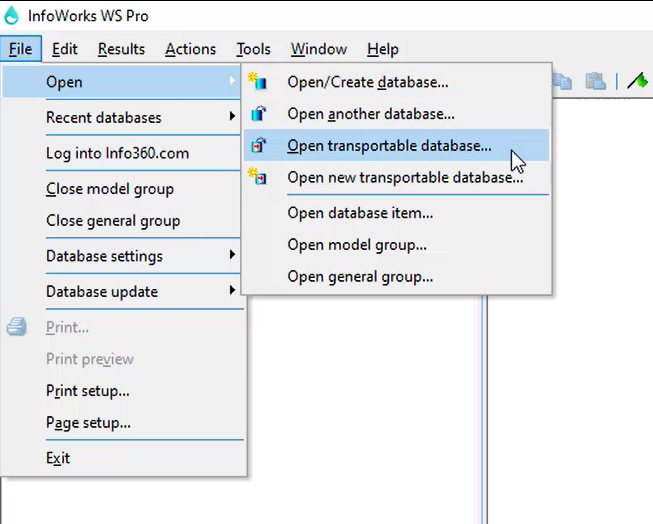
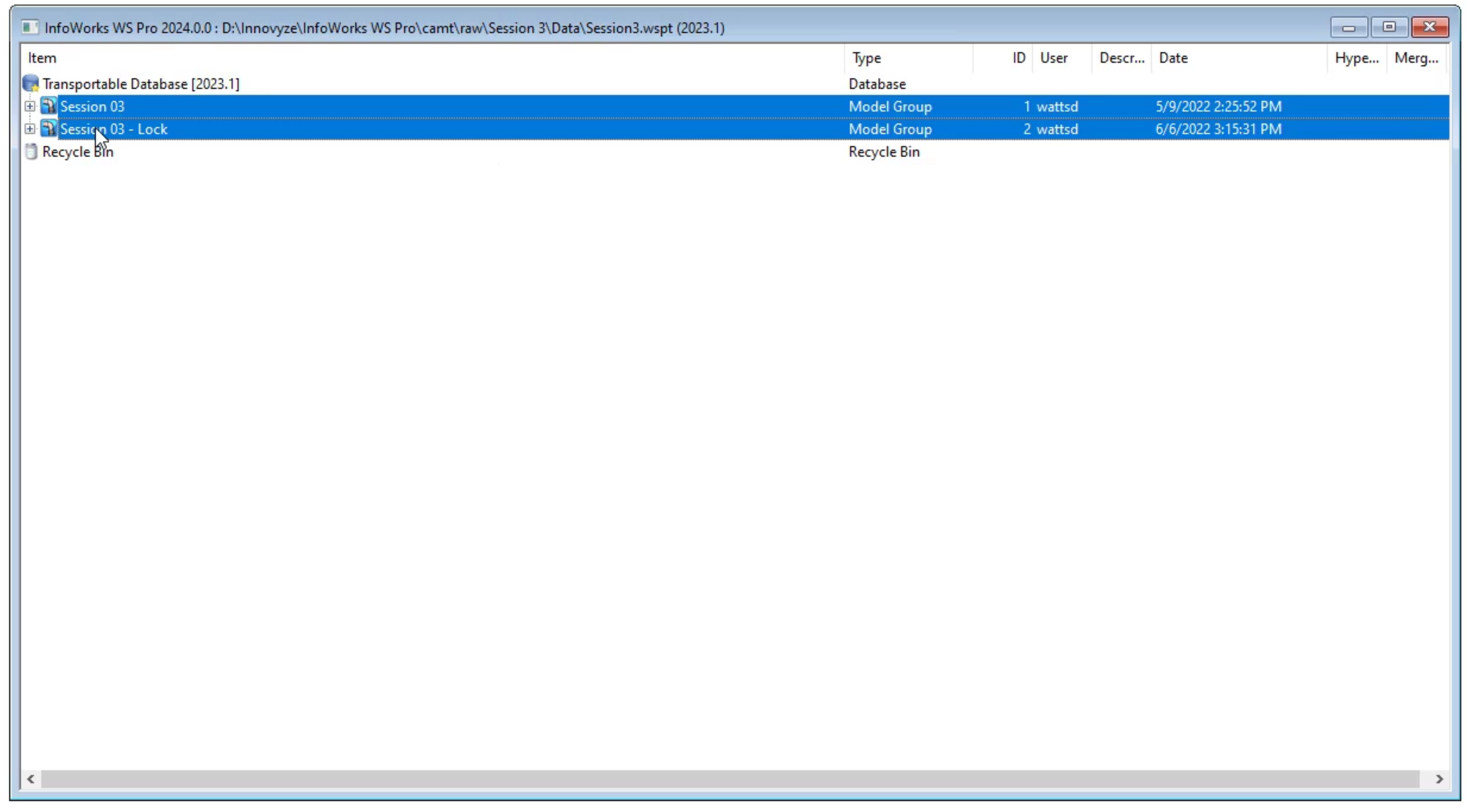
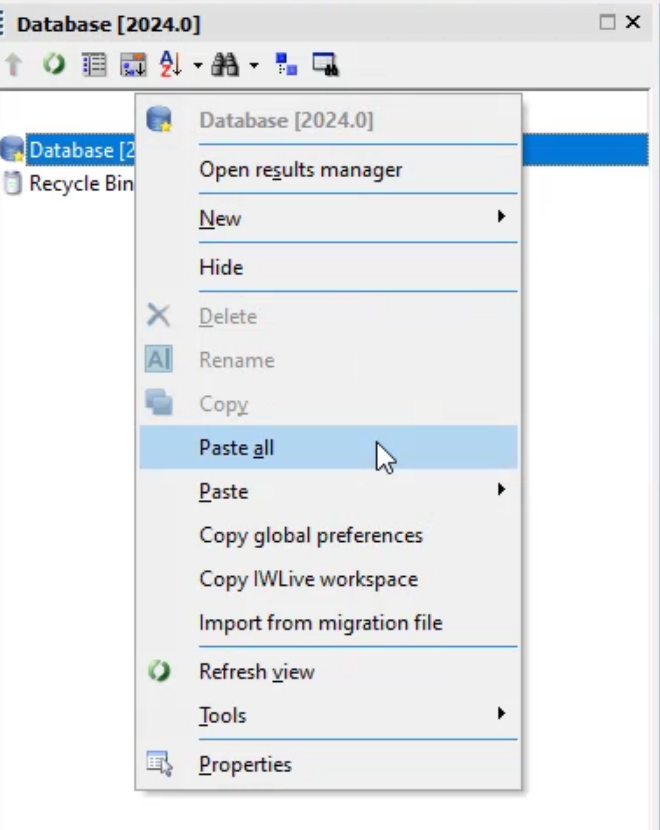
To start the validation process:
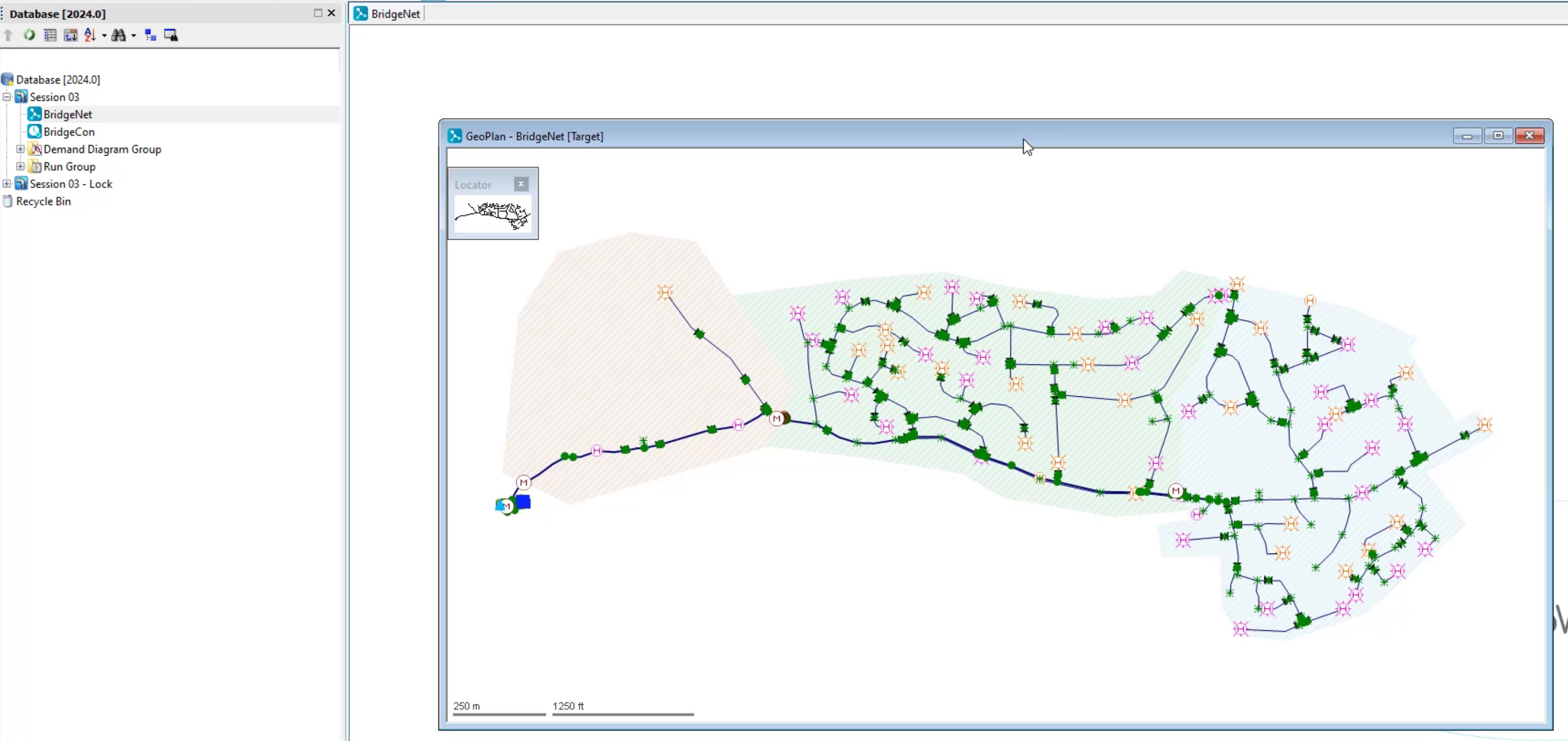
Note: If you have the control and demand diagram already associated with the network, they will open with the network. Skip to Step 18.
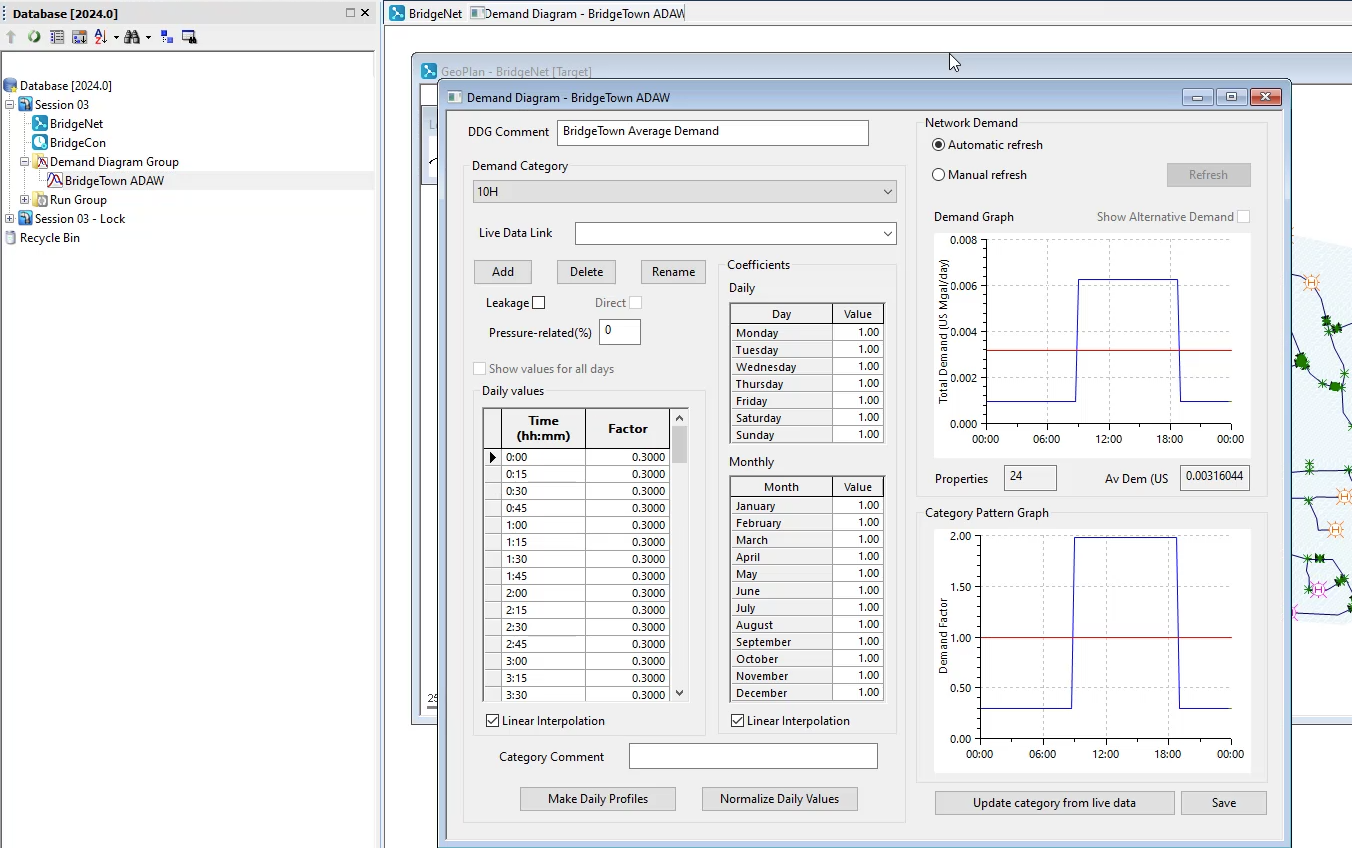
To validate the network:
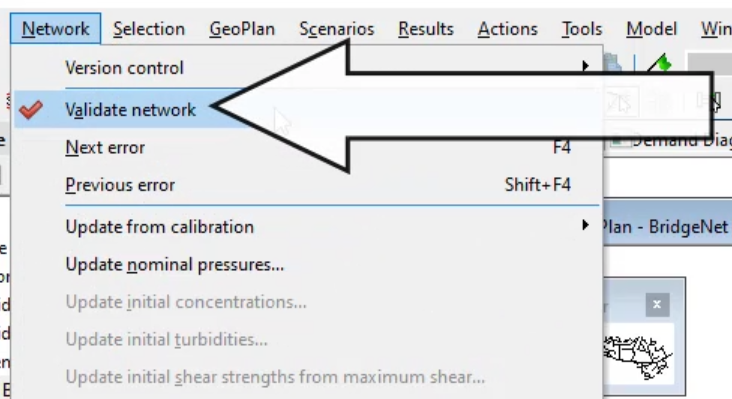
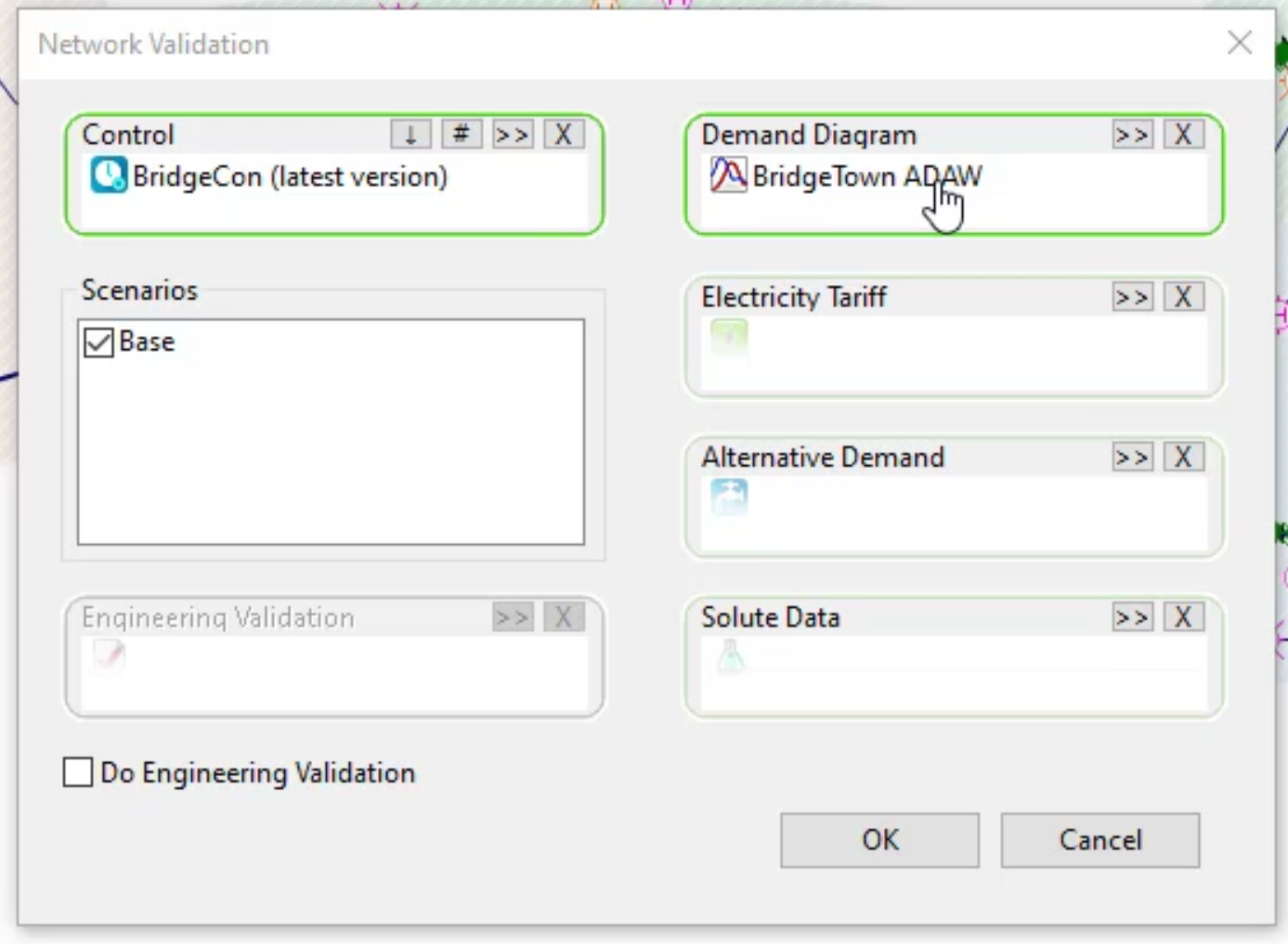

Note: Re-validate the model after fixing each error. Sometimes, resolving one error will solve others linked to it.
Note: You may not need to resolve a warning if it represents a change or setting you intended.
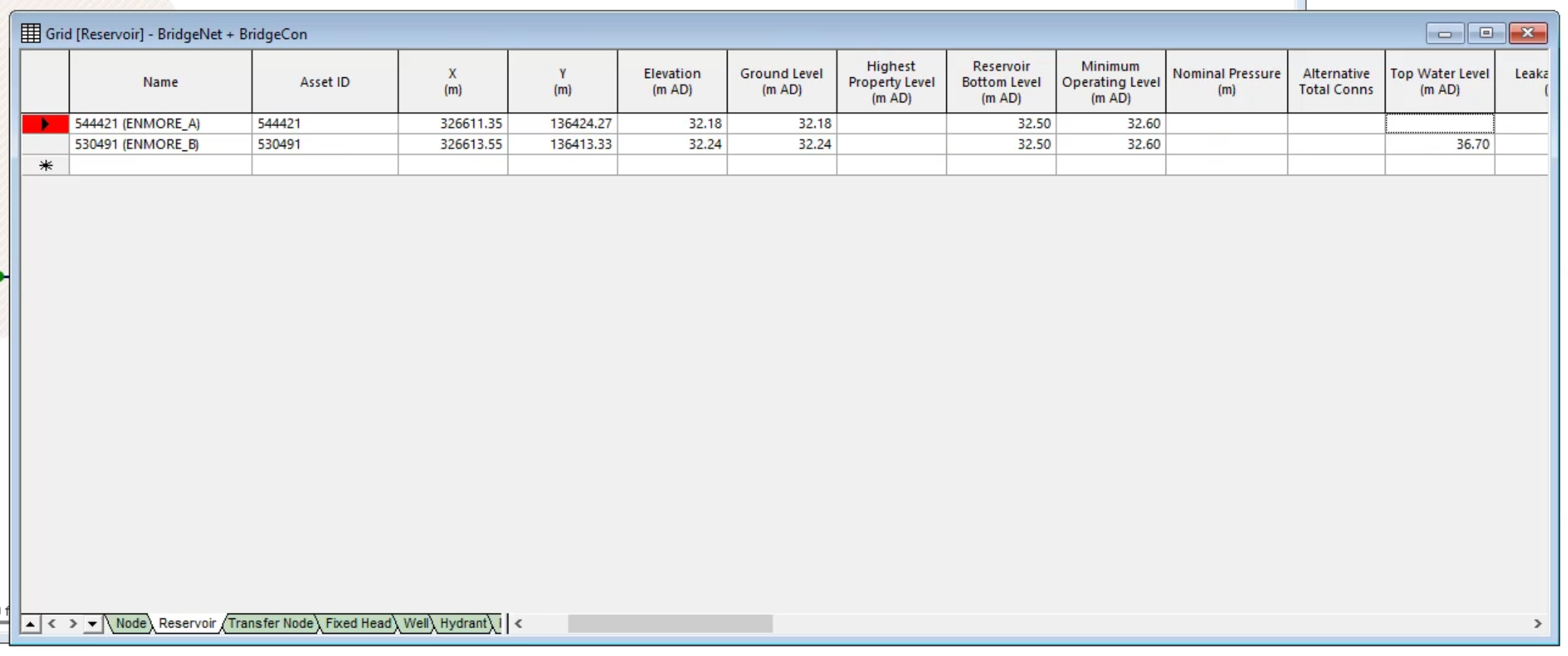
To resolve a connectivity error:
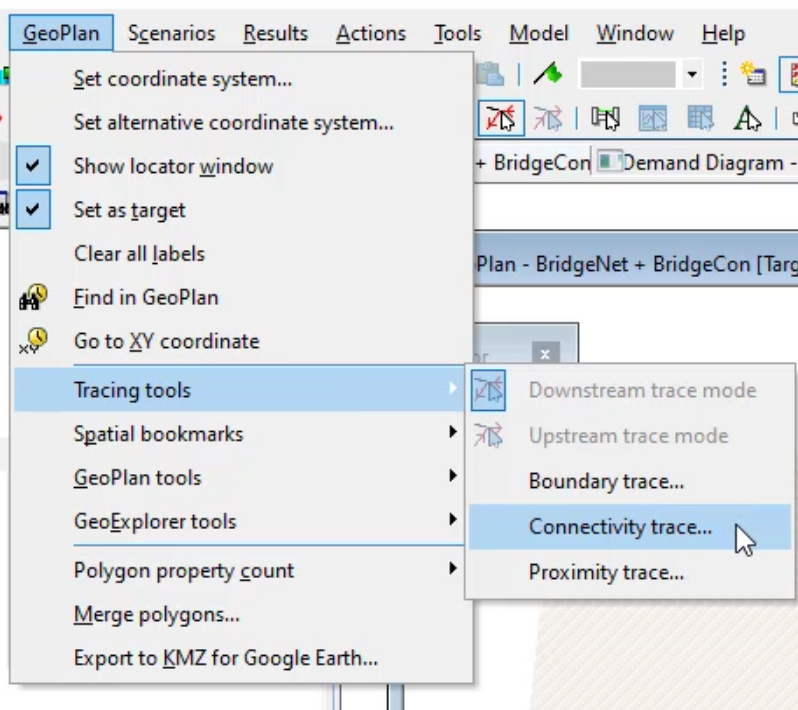
In the Subnetworks Found dialog, notice there are two subnetworks, meaning a single connectivity break in the network is separating it into two subnetworks.
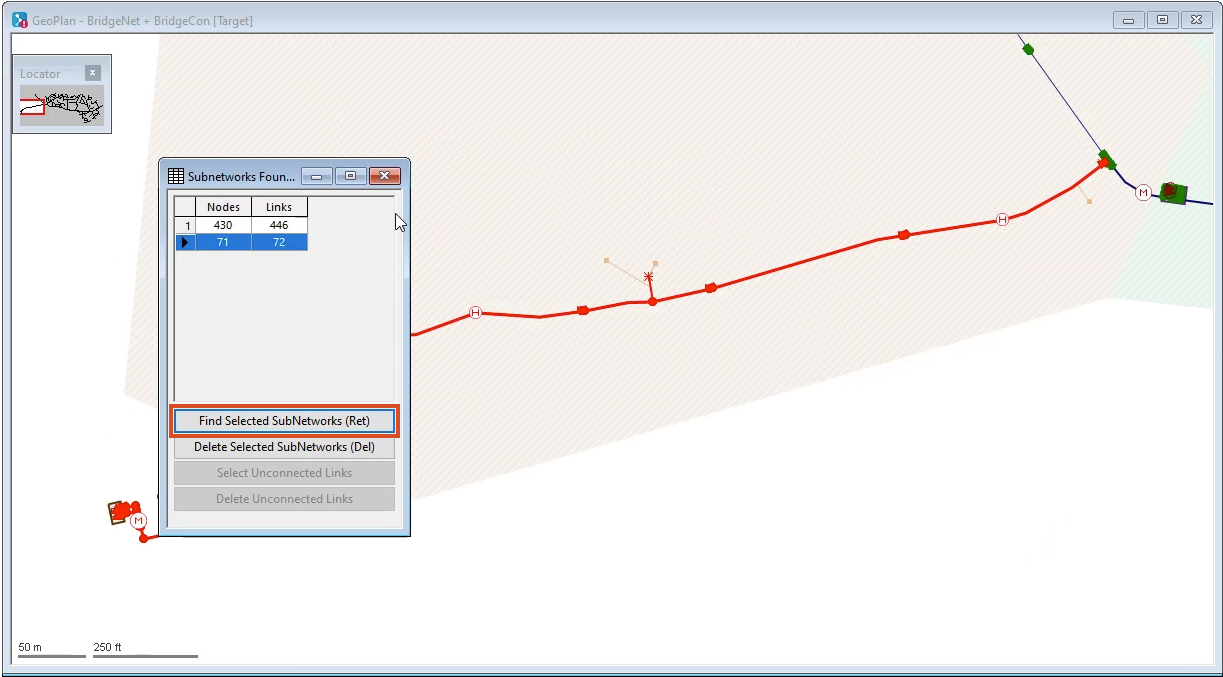
In this example, a junction is not complete, so water cannot flow from the reservoir upstream past this point.
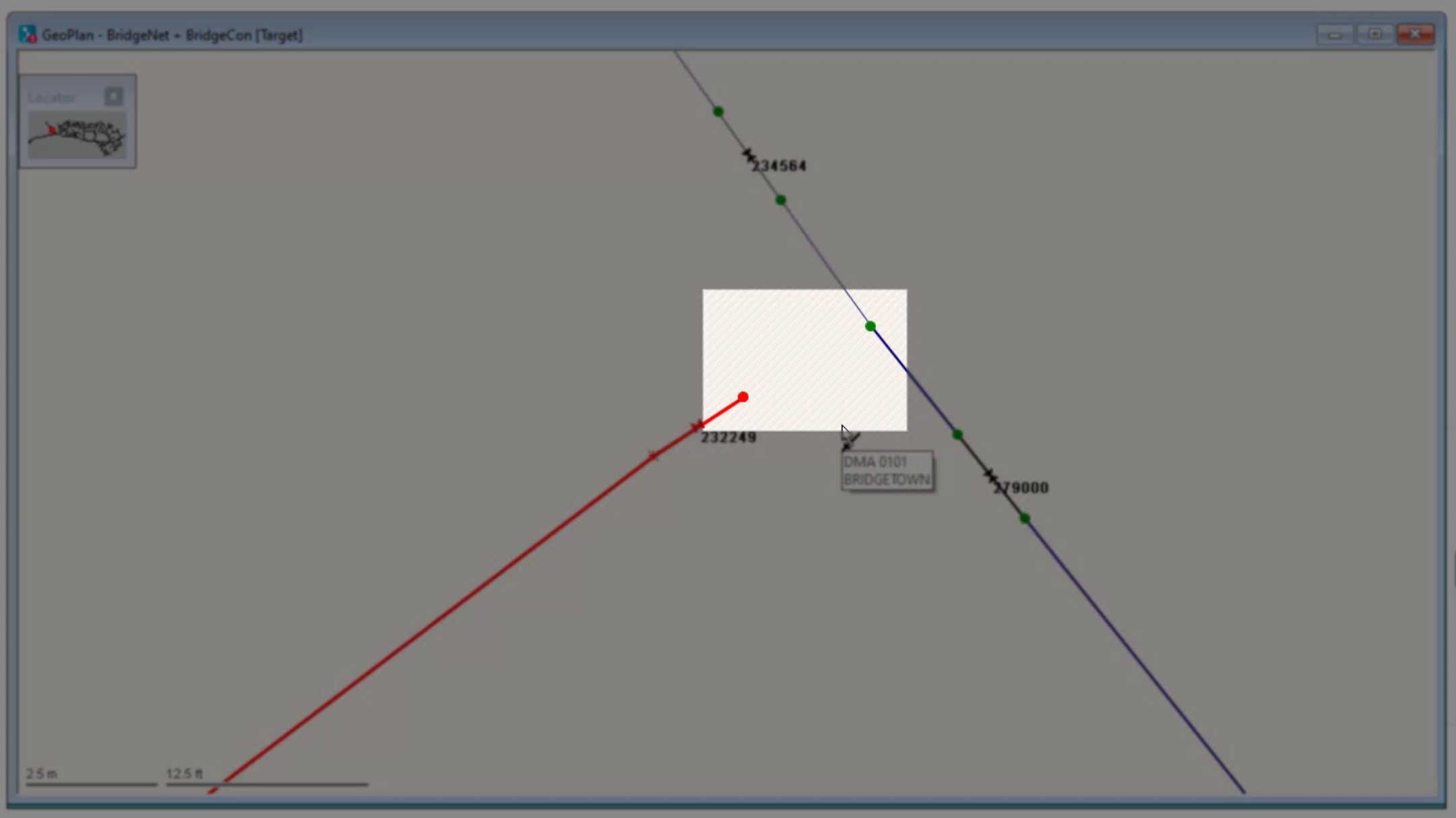
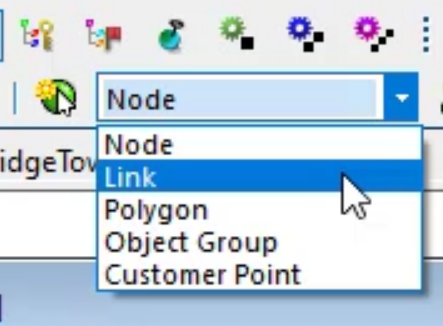
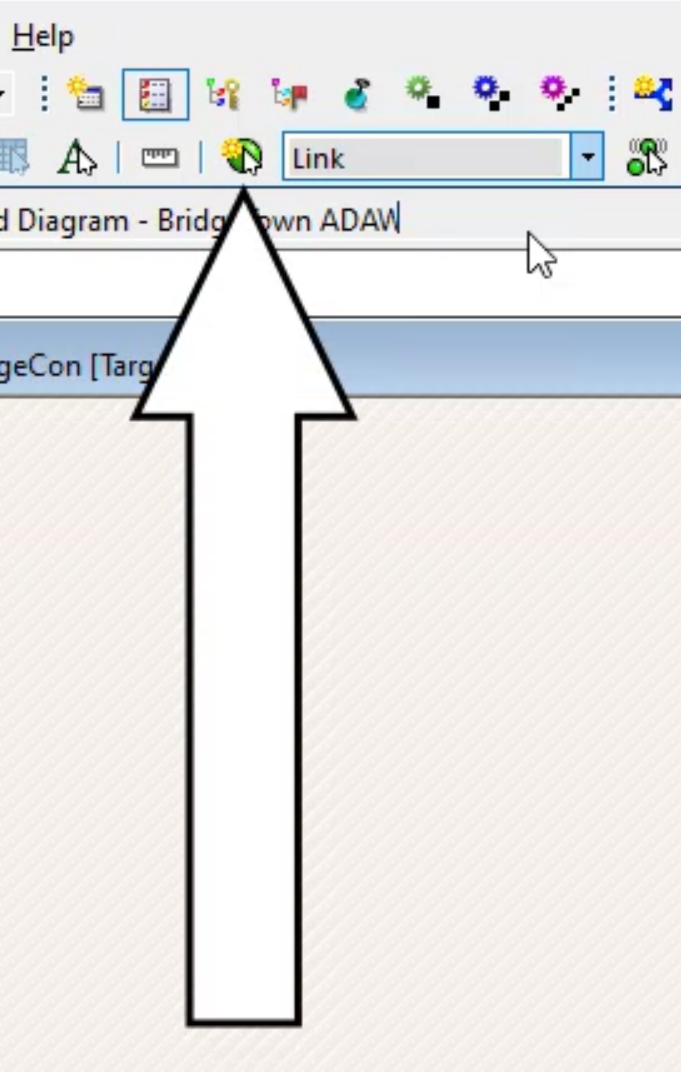
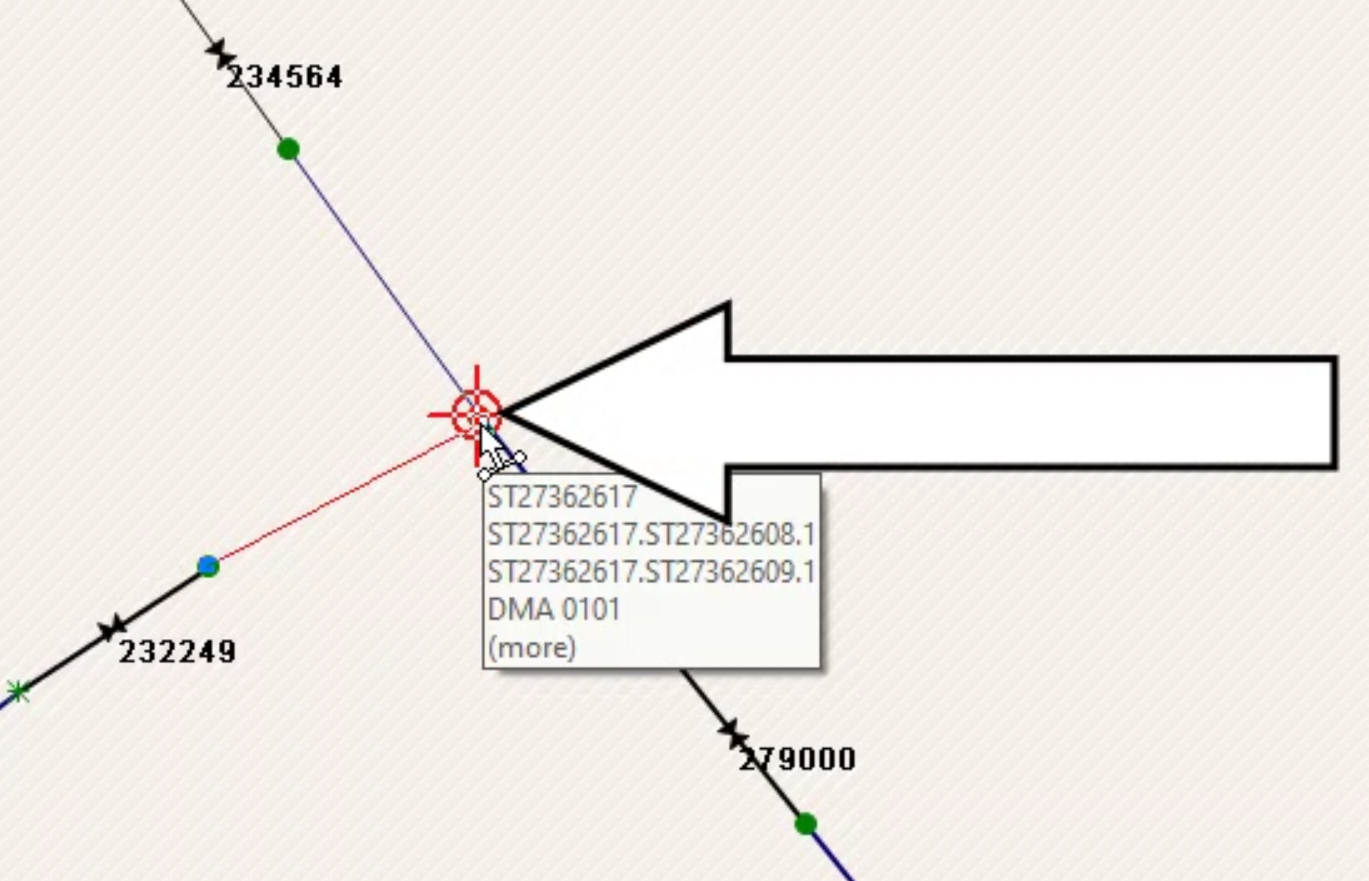
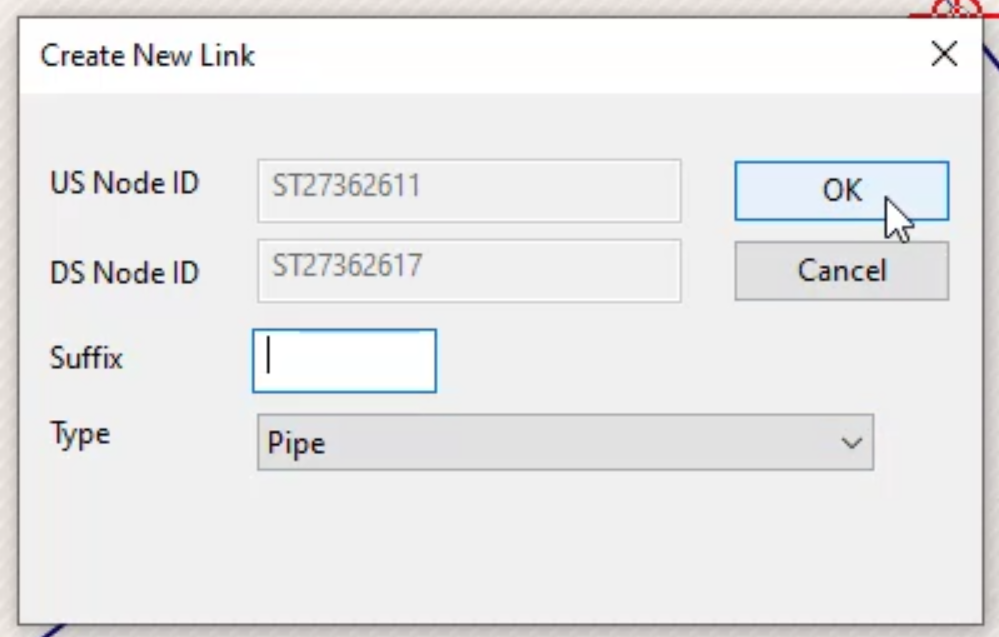
Note: In this example, the small cells next to the Diameter (mm) and CW - k (mm) fields are red. This means you are required to enter values for those properties.
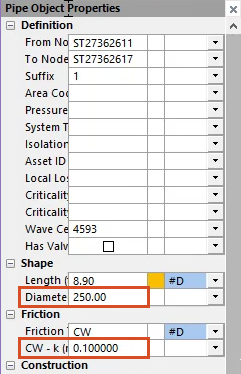
Notice the Output Window only lists three errors, as the connectivity issue is solved. Solving that issue also resolved the warning that had previously appeared here. Also, notice the Reservoir error is now at the top of the list.
To resolve a reservoir error:
In the Grid window, in the Top Water Level (m AD) column, notice the first cell is blank. This is a common error that often happens when importing data from other sources, such as GIS.
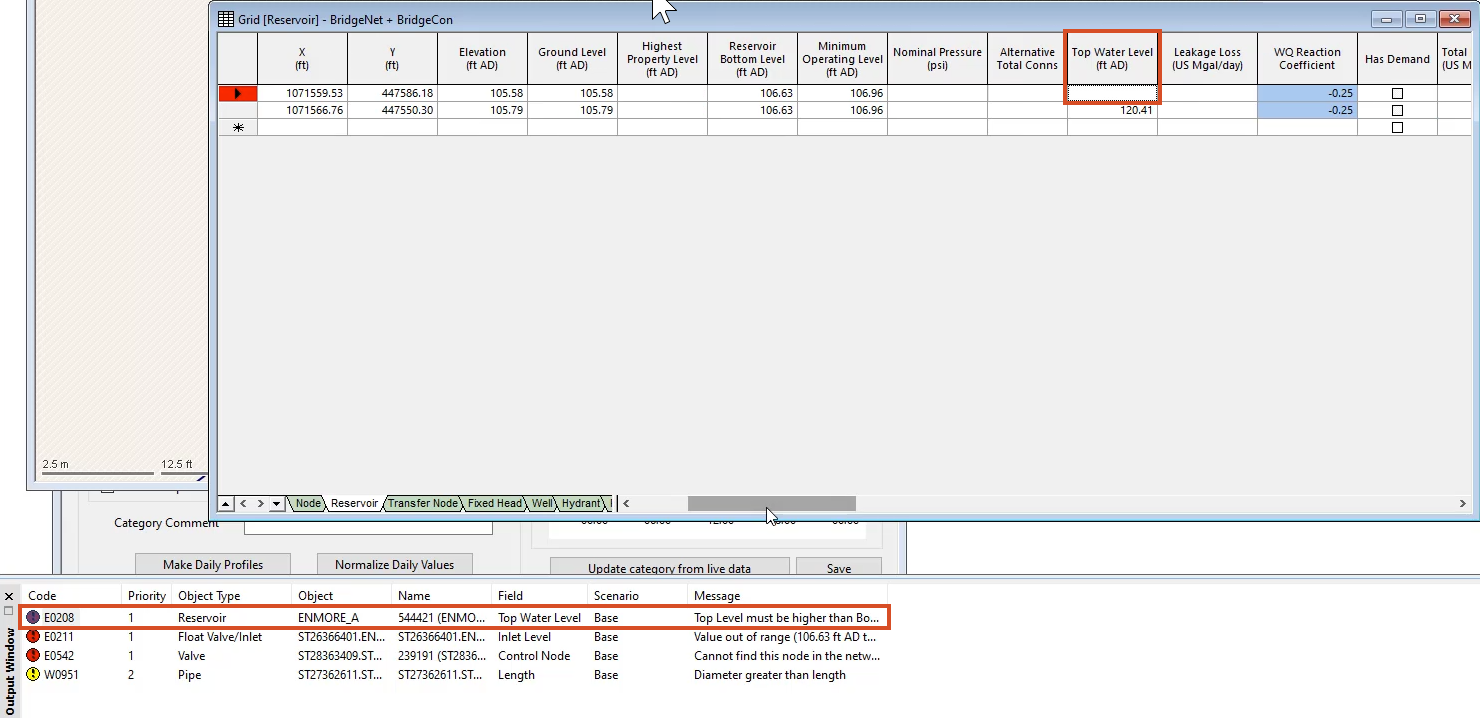
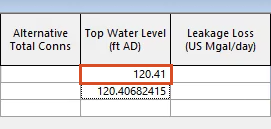
Notice the Output Window now lists only one error, again emphasizing that fixing one error can solve another.
To resolve a valve error:
Note: You can fix the error in the grid, but sometimes, it is easier to use the GeoPlan.
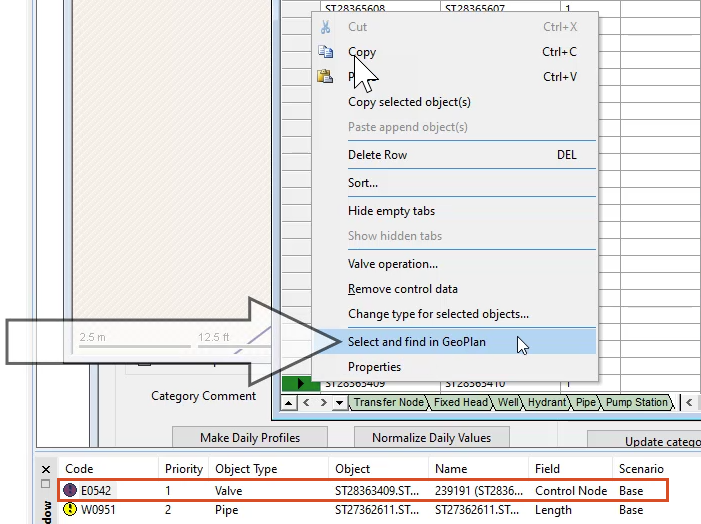
Notice this changes the window from a grid to a zoomed-in view of the GeoPlan with the valve highlighted in red.
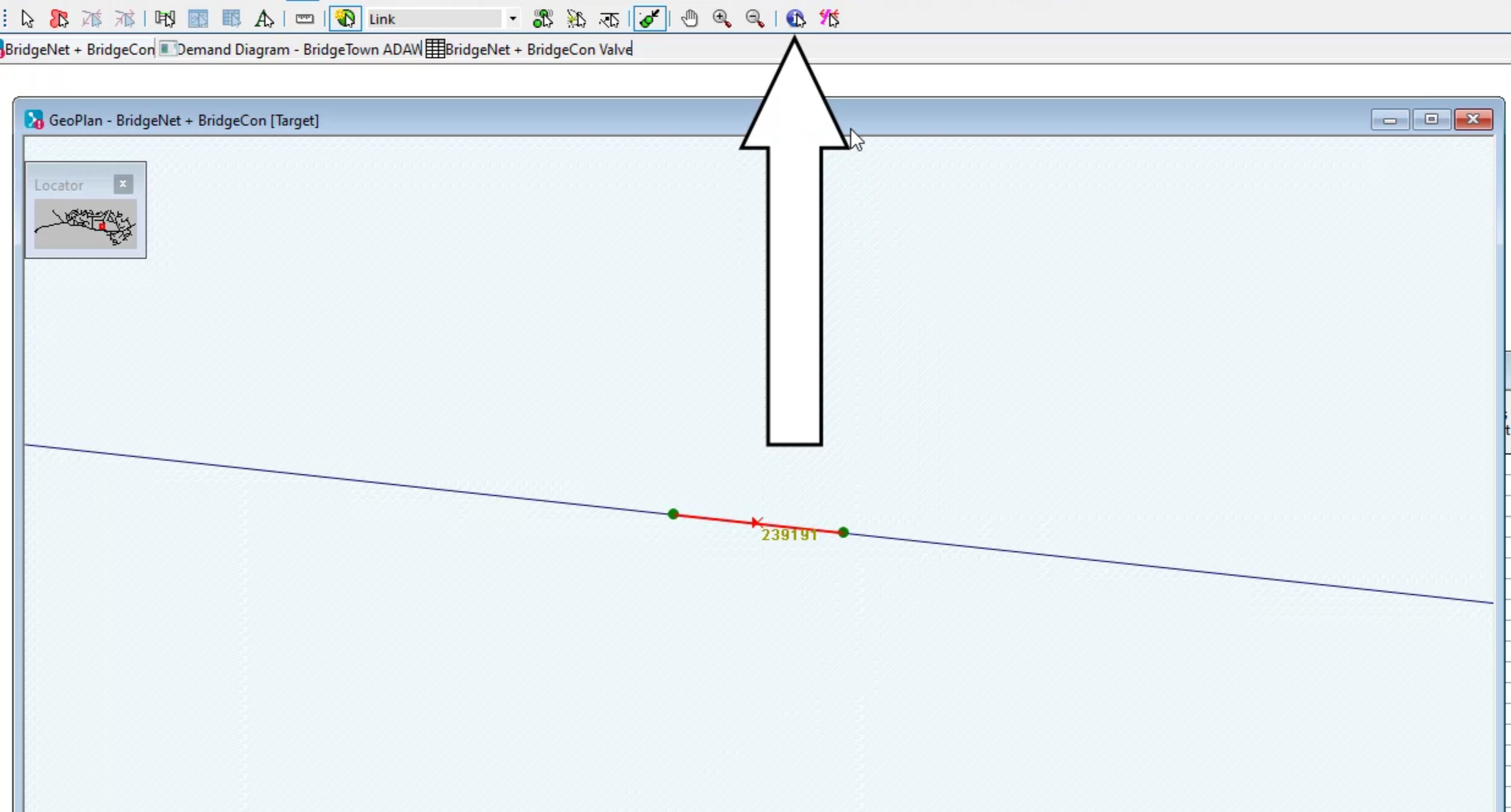
Note: Because this is a pressure-reducing valve (PRV), it requires a control node. In this example, the node immediately downstream is used as the control.
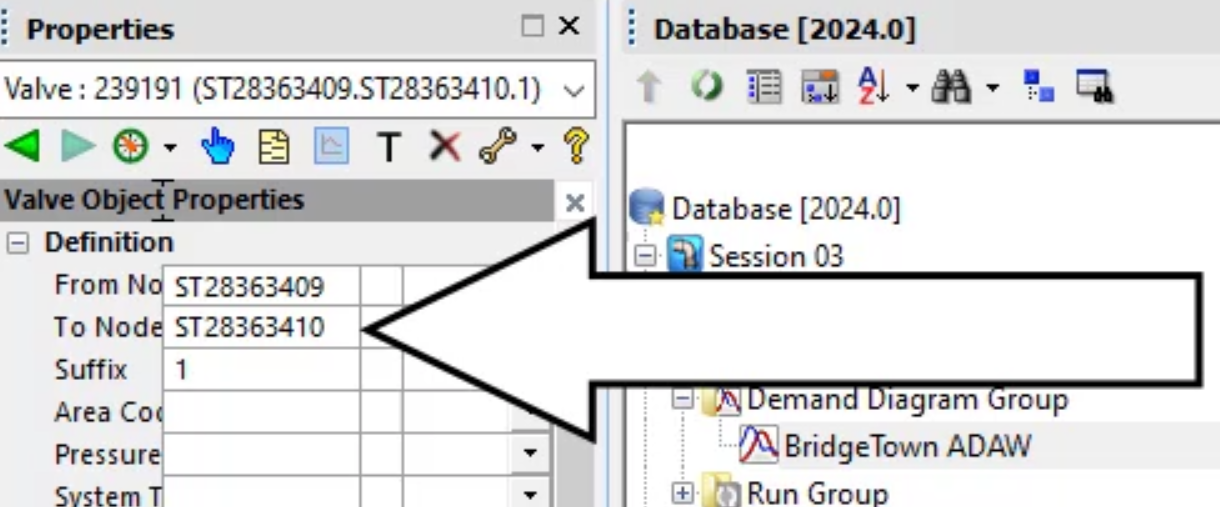
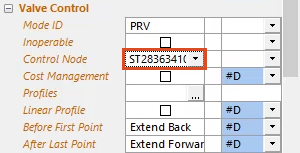
The Output Window is now cleared of all errors and warnings, meaning that the model is now hydraulically sound and ready to be run through simulations.